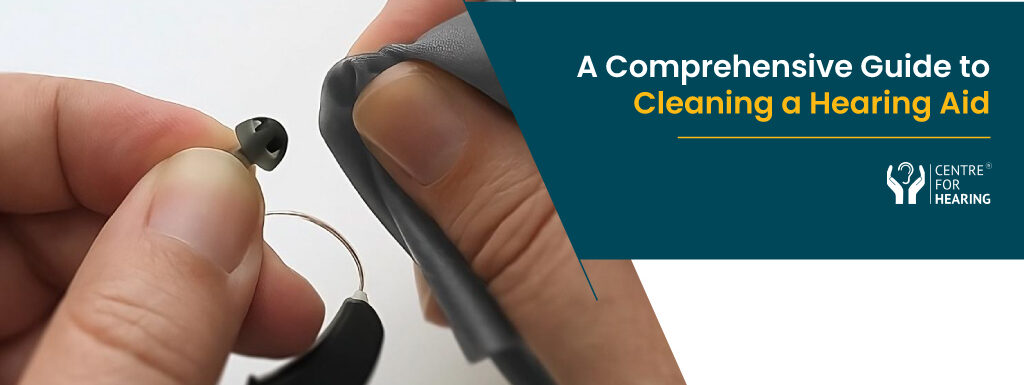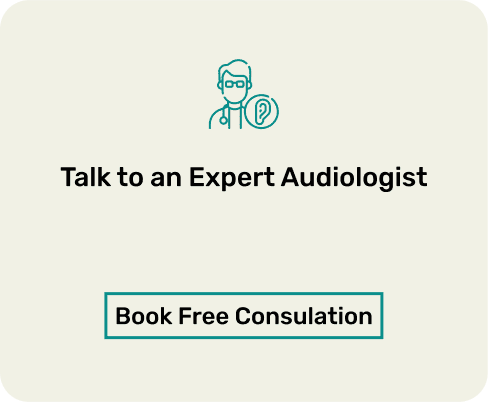Hearing aids are effective technologies that improve the quality of life for millions of people who have hearing loss. Proper maintenance is essential for ensuring that these devices perform optimally and survive for many years.
With regular care, hearing aids can go for long periods without requiring professional cleanings or repairs. This detailed guide will walk you through the necessary tips and processes for maintaining and cleaning a hearing aid, ensuring that it is a dependable companion in your daily life.
If you want to know more about hearing loss and ways to fight it, check this out.
The Importance of Regularly Cleaning a Hearing Aid
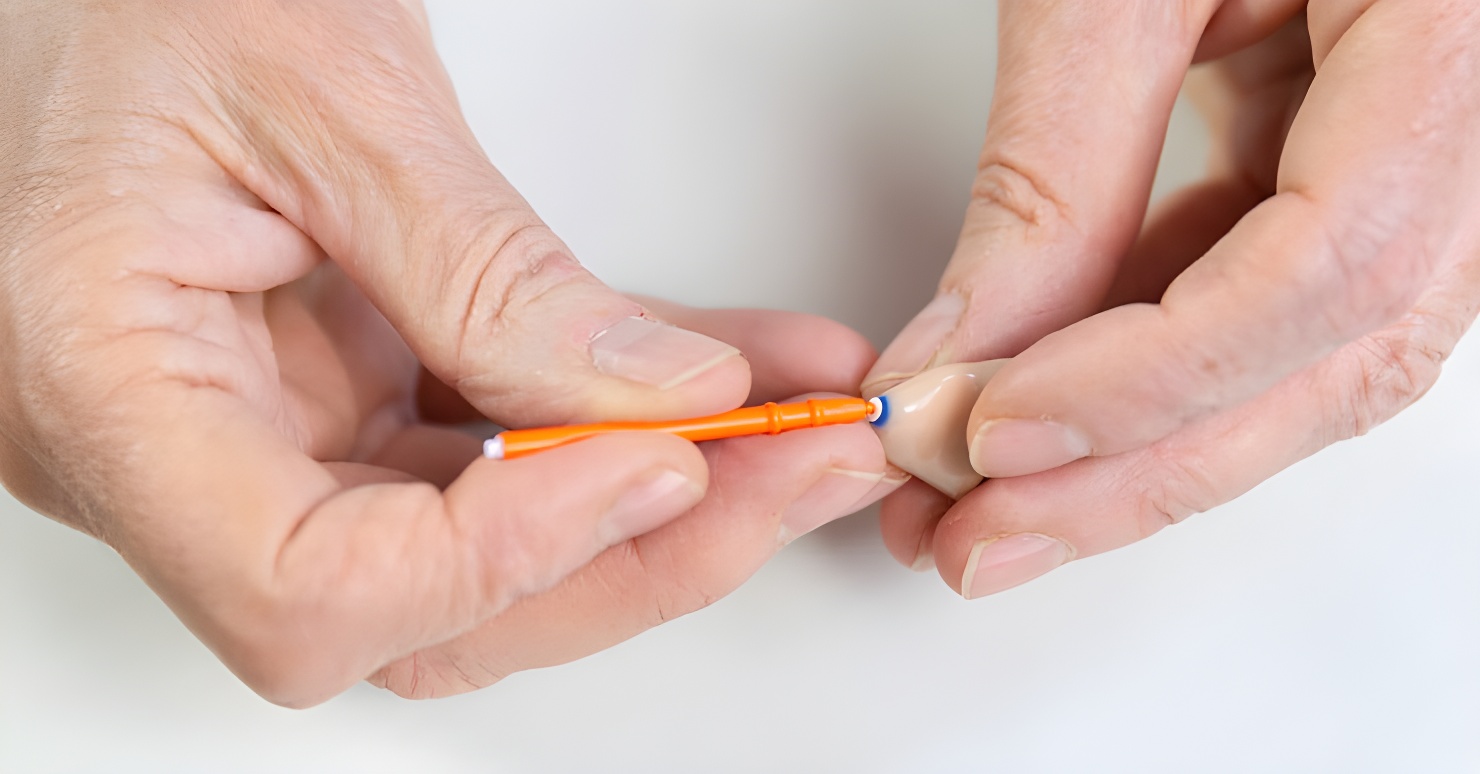
Cleaning a hearing aid is important not only for hygiene but also for its effectiveness and longevity. The devices are susceptible to sweat, earwax, and other debris, which can clog speakers and microphones, resulting in poor sound quality and probable failures.
Regular cleaning improves sound transmission and avoids the buildup of dangerous bacteria, lowering the risk of ear infections.
Read on to learn the excessive dangers of earwax and how to treat it.
Step-by-step Guide for Cleaning a Hearing Aid
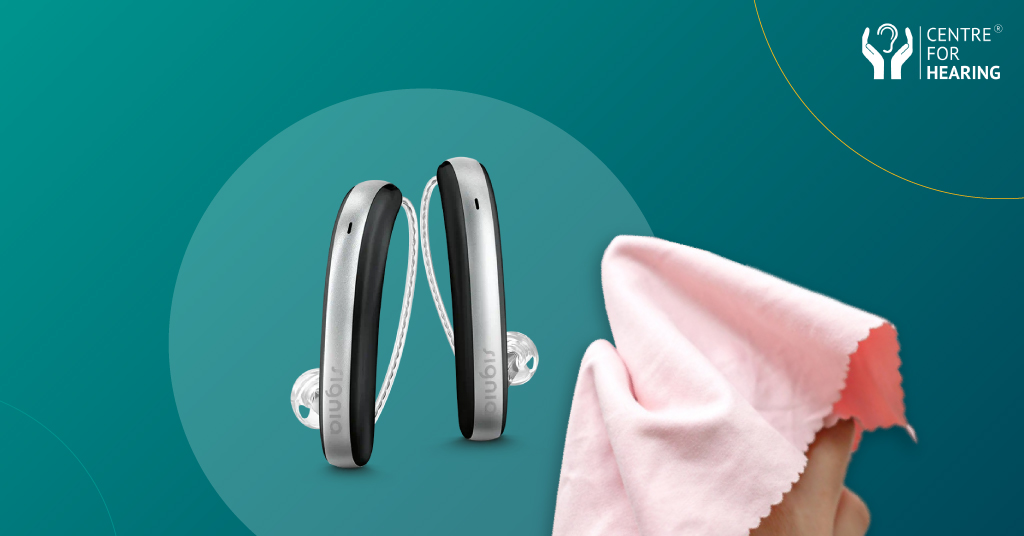
Following a few simple actions will help you care for your hearing aids correctly. Here, you’ll learn the best ways to clean hearing aids and how to build an effective cleaning practice.
Despite differences between models, most hearing aids have similar cleaning steps:
Essential Care Tips for Hearing Aids
- Before you begin, make sure you have a soft cloth, wax pick, brush, and any other instruments advised by your audiologist or hearing aid maker. These tools are intended to clean delicate components without causing damage.
- Wipe the surface of the hearing aids with a gentle cloth. This helps to remove oils, grime, and moisture from the outside. Make it a practice to clean them down each night before putting them away.
- Use a brush or wax pick to clear the microphone and receiver openings. These holes are crucial to sound quality. Brush away any debris gently, being careful not to push it further into the gadget.
- Remove any wax buildup or dirt in the tubes or vents. Use a wax pick to carefully remove any obstructions. For BTE versions, the tubing should be examined regularly and replaced if it gets hard or discoloured.
- Moisture and grime in the battery compartment can result in failures. To ensure peak performance, keep the compartment dry and clean and change the hearing aid batteries regularly.
- Moisture is a major adversary of hearing aids. Using a dehumidifier will help your hearing aids last longer and function properly daily.
How to Clean BTE Hearing Aids
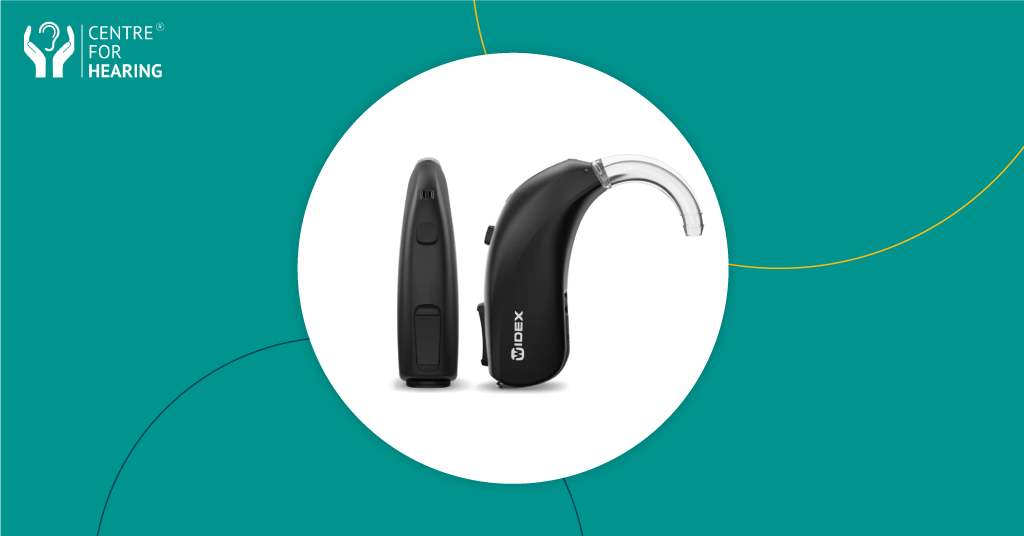
The size and construction of behind-the-ear (BTE) hearing aids make them very simple to clean. Here’s a step-by-step instructions:
- With a gentle brush, remove any wax or dry skin from the exterior case. To prevent scratches on the surface, use a delicate brush.
- Remove your hearing aid’s earmolds and occasionally bathe them in soapy water. Earmolds can accumulate wax and debris, so soaking in warm, soapy water will help keep them clean. To avoid moisture damage, make sure they’re totally dry before reattaching.
- Using a bulb blower, blast air into the tube to eliminate moisture. Moisture can impair the sound quality and functionality of your hearing aids. Using a bulb blower might help to keep the tubing clean and dry.
- Silicone earmolds can get discoloured over time. Brushing them and cleaning the duct with a specific rod keeps them effective. Replace silicon domes every two to three months to ensure proper hygiene and sound quality.
How to Clean ITE Hearing Aids
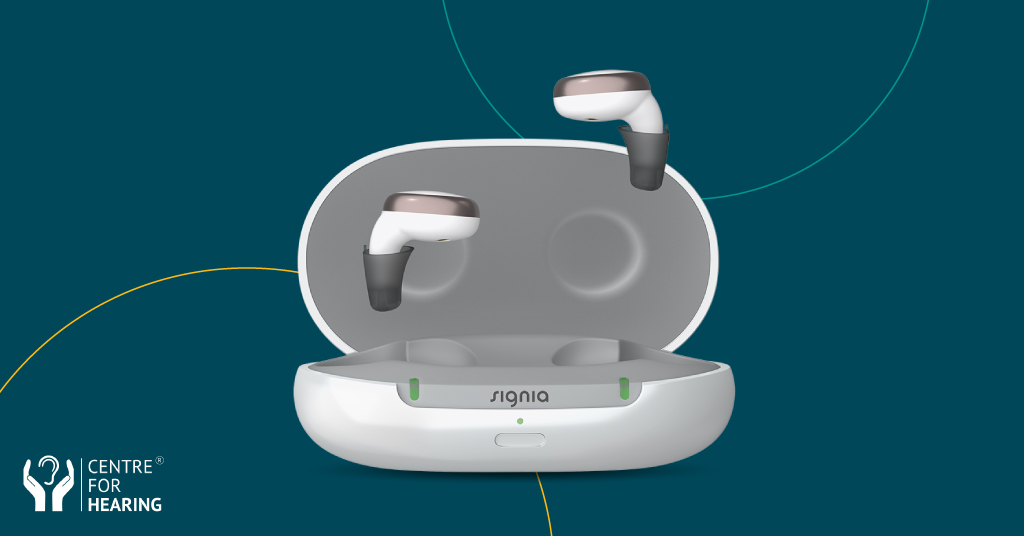
In-the-ear (ITE) hearing aids, especially completely-in-canal (CIC) devices, are smaller and more likely to become dirty rapidly.
Follow these methods to effectively clean:
- Concentrate on the openings, such as microphone ports, receivers, and vent holes. Use a soft-bristled toothbrush or the brush provided by your hearing care professional to carefully clean these parts.
- Hold the device you’re cleaning with its opening pointing down. This helps to keep loose particles from being lodged within the hearing aid.
- Using a wax pick or hook, remove any debris from the holes. To maintai a clear sound quality, carefully remove any wax accumulation.
- Replace the wax filter every three to four weeks, or as directed. Wax filters keep earwax from entering the hearing aid and influencing its performance. Regular filter replacement guarantees optimal function.
How Often Should You Clean Your Hearing Aids?
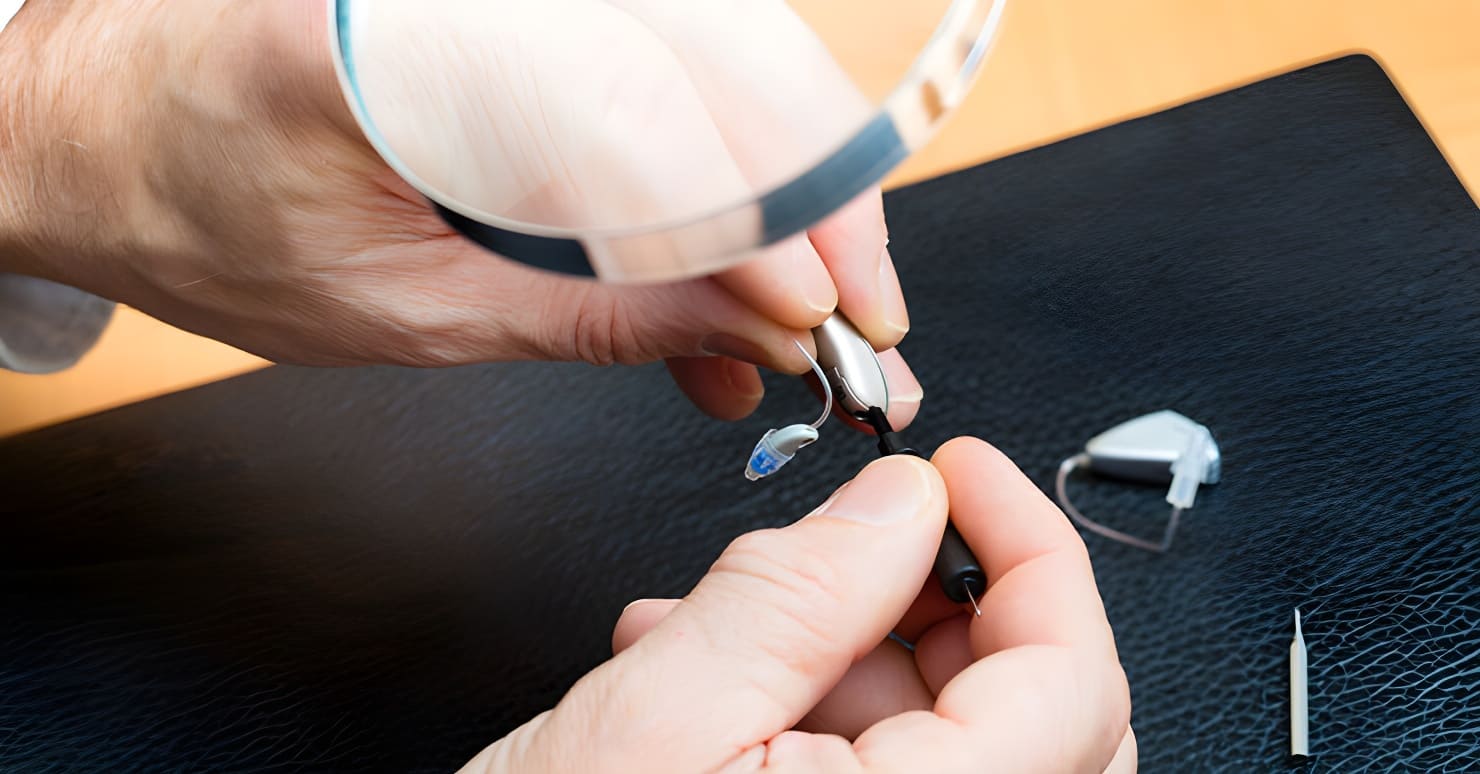
Hearing aids should be maintained on a daily basis to preserve their longevity and performance. Here is a recommended cleaning schedule:
Daily Cleaning
After removing your hearing aids, wipe them down every night. This helps to eliminate oils, moisture, and debris accumulated throughout the day.
Weekly Deep Clean
Cleaning a hearing aid once each week can do wonders. This involves cleaning the tubes and earmolds, as well as changing any necessary wax filters.
Expert Cleaning
Schedule regular appointments with your audiologist for expert maintenance. This may be required every few months, depending on your specific hearing aids and usage.
3 Best Practices for Hearing Aid Care
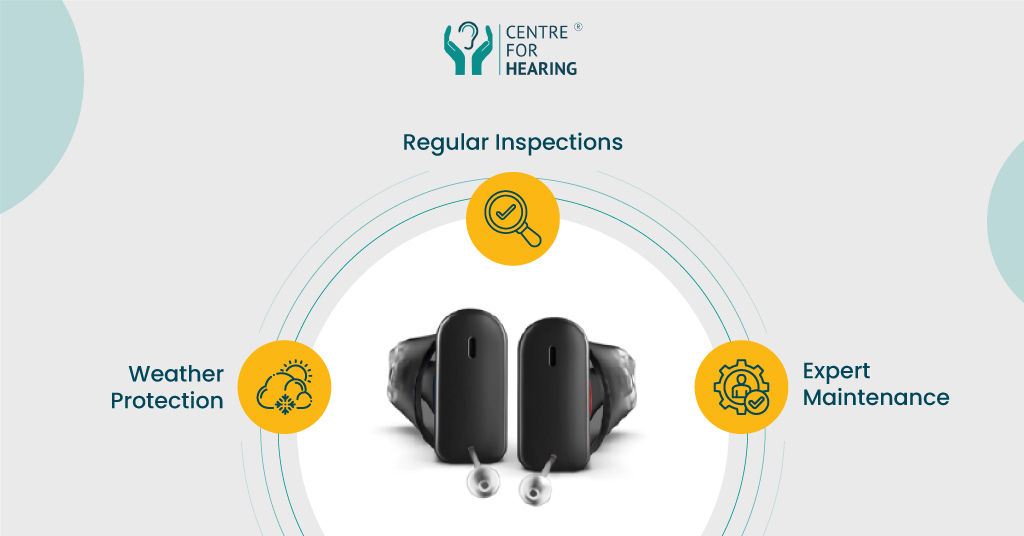
Weather Protection
Heat and dampness can damage hearing aids. Do not expose them to harsh temperatures, humidity, or direct sunshine. When not in use, store them somewhere dry and cool.
Regular Inspections
Every night, check your hearing aids for wear and damage. Examine tubing, earpieces, and moulds to see whether they require replacement. Early discovery of concerns can help to prevent more serious complications.
Expert Maintenance
The practice of cleaning a hearing aid can also be taken care of by an expert. Make regular appointments with an audiologist for cleaning and maintenance. This ensures peak performance and extends the life of your hearing aids.
At Centre for Hearing®, we recognise the importance of ensuring that your hearing aid performs optimally, giving you a flawless hearing experience. Schedule a consultation at one of our Centre for Hearing® sites in Delhi, Gurgaon, Mumbai, Chandigarh Tricity Area, or Punjab to ensure your device is in good working order.
Enhance Your Hearing Aid’s Longevity and Performance
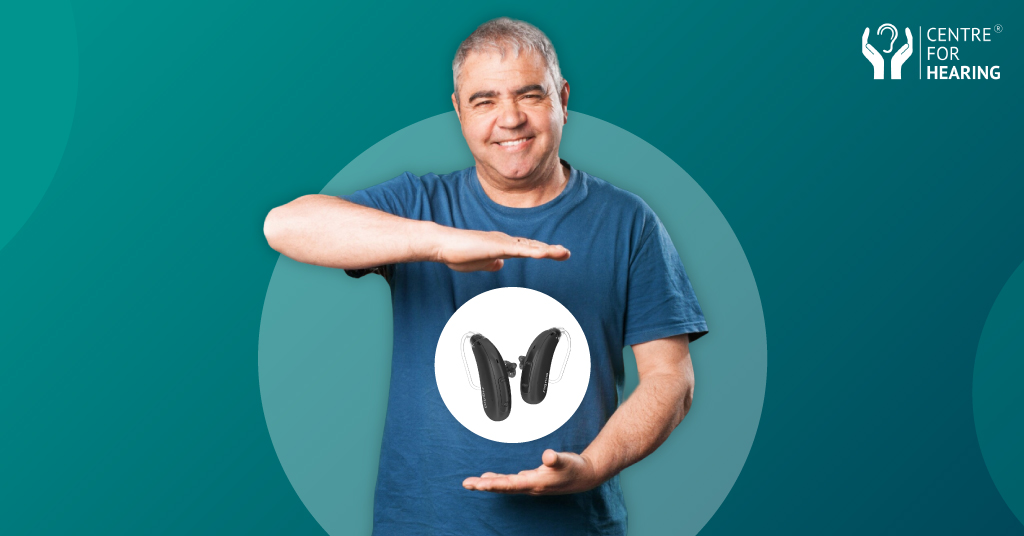
Cleaning a hearing aid can dramatically increase its lifespan and enhance your overall experience. Adopting an effective routine and employing the correct tools can ensure that your hearing aids operate optimally and stay dependable companions.
Daily at-home maintenance, combined with frequent expert hearing exams, can ensure that your hearing aids operate, last, and are comfortable, allowing you to hear your best at all times.
At Centre for Hearing®, we are dedicated to providing you with the greatest hearing experience possible. We emphasise the importance of hearing aids and audiometry exams and work with internationally recognised companies such as Phonak, Signia, Widex, Resound, Oticon, and Starkey.
If you need further assistance or a professional check-up, call us at 9811227260 to book a free hearing aid trial.

